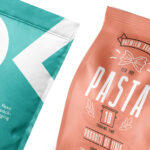In the dynamic world of healthcare, effective communication is key. One tried-and-true method of communication is the use of healthcare brochures. These vital tools have been a cornerstone in patient education, marketing, and community outreach, helping bridge the gap between healthcare providers and the public.

Importance of Healthcare Brochures
With the increasing complexity of healthcare services, brochures simplify and convey essential information. They not only inform patients about services, treatments, and technologies but also guide them towards making informed decisions. According to a study by [GPE Print](https://gpeprint.com/blog/what-is-the-purpose-of-brochures), brochures remain an indispensable tool in the marketing arsenal due to their tangibility and ease of distribution.
Brochures as Educational Tools
Healthcare brochures play a crucial role in education by providing detailed insights into health conditions, preventive measures, and wellness tips. They enable healthcare professionals to disseminate critical information effectively to a wide audience, ensuring clarity and comprehension.
Design Elements of Effective Brochures
The efficacy of a brochure lies not only in its content but also in its design. A well-designed brochure captures attention, engages readers, and ensures the message is retained. Key design elements include clear headings, bullet points, and engaging visuals, all of which contribute to the overall impact.
The Role of Healthcare Brochures in Marketing
In an era dominated by digital marketing, healthcare brochures remain a powerful tool in the offline marketing landscape. They offer personalization and a tangible connection, which is often missing in digital communication.
Personal Connection and Recall
Unlike digital ads, brochures provide a personal touch, creating a memorable impact. The tactile experience of holding a brochure can enhance recall and persuasion, making it a valuable resource for healthcare providers.
Cost-Effective Marketing Strategy
Brochures are a cost-effective way for healthcare institutions to reach a broad audience. With options like [small-quantity printing](https://newprintingera.com/small-quantity-brochure-printing/) available, organizations can customize their print runs to suit their marketing needs and budget, maintaining efficiency.
Types of Healthcare Brochures
Depending on the target audience and the message, brochures come in various types and formats. Understanding these types can help healthcare organizations choose the right style for their goals.
Informational Brochures
These brochures are designed to provide detailed information about specific health issues or services. They often include statistics, diagrams, and FAQs to educate patients thoroughly.
Promotional Brochures
Aimed at marketing and advertisement, these brochures highlight the unique services and benefits of a healthcare provider, often seen in waiting rooms and reception areas as part of outreach and awareness campaigns.
Best Practices for Creating Healthcare Brochures
To create impactful brochures, healthcare organizations should follow certain best practices. This ensures that their brochures not only inform but also inspire and motivate the audience.
Understanding the Audience
Knowing the audience is crucial in creating resonant brochures. Tailoring the message to the age, culture, and education level of the target audience enhances understanding and engagement.
Clarity and Simplicity
Information should be easy to understand. Avoid jargon and use simple language to ensure the message is accessible to everyone, ensuring that it caters to the general public as well as specific demographics.
Distribution of Healthcare Brochures
Effective distribution is essential to the success of any brochure. Knowing the right avenues ensures that the target audience receives the message, thus maximizing the brochure’s impact.
Direct Mailing
Direct mailing remains a strong channel for distributing healthcare brochures, especially to reach demographics who may not have regular internet access.
Public and Community Spaces
Brochures placed in strategic locations like clinics, hospitals, libraries, and community centers can reach a diverse audience, making them a smart choice for community-based initiatives.
Future of Healthcare Brochures in a Digital World
Despite the rise of digital media, the future of brochures in healthcare seems secure due to their unique benefits. They offer a personal touch that technology often lacks.
Integration with Digital Platforms
Modern brochures are now incorporating QR codes and digital links to bridge the gap between offline and online media, enhancing accessibility and interaction.
Sustainability and Eco-Friendly Options
As the world moves towards sustainability, so does the printing industry. Brochures are now being printed on recycled paper with eco-friendly inks, catering to a more environmentally-conscious audience.
Conclusion
In conclusion, healthcare brochures are indispensable in communicating important health information, marketing services, and connecting with patients. By adapting to new technologies while maintaining their traditional strengths, brochures continue to be relevant and effective.

Frequently Asked Questions
What makes a good healthcare brochure?
A good healthcare brochure is informative, visually appealing, and tailored to its target audience. It uses simple language, clear headings, and engaging visuals to convey its message effectively.
How can healthcare organizations distribute brochures effectively?
Effective distribution can be achieved through direct mailing, placing them in public spaces such as clinics and libraries, and integrating them with digital strategies like QR codes.
Are brochures still relevant in the digital age?
Yes, they are. Brochures provide a tangible connection and personal touch, which digital media often lacks. They are also evolving by integrating digital elements, ensuring they stay relevant.
This article contains affiliate links. We may earn a commission at no extra cost to you.






